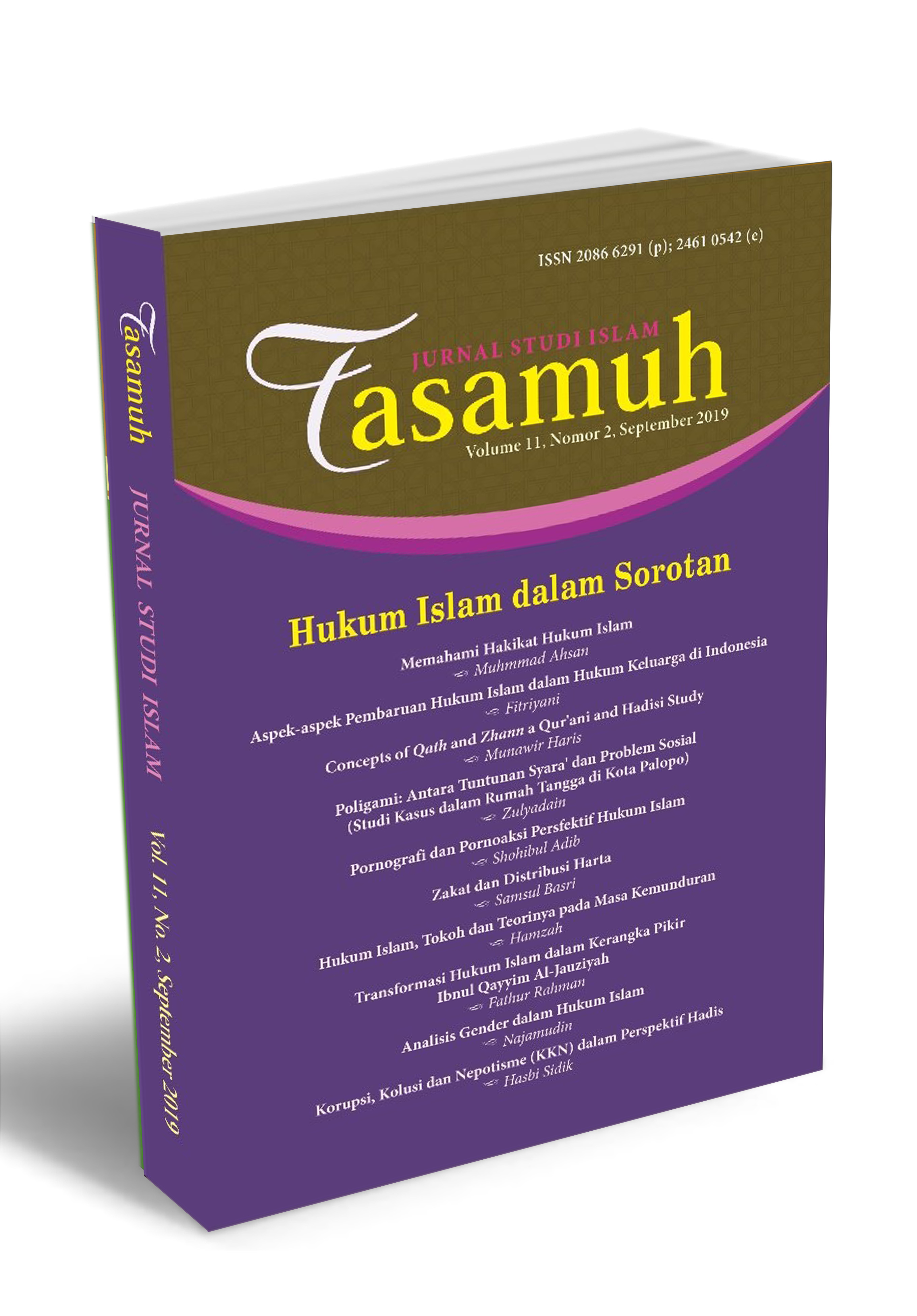Situasi Politik Pemerintahan Dinasti Umayyah dan Abbasiyah
DOI:
https://doi.org/10.47945/tasamuh.v10i2.79Keywords:
Caliph of the Muslim, Political Situation, Umayyad Dynasty, Abbasid Dynasty, Mu’awiyah bin Abi Sufyan, Hasan bin Ali, Abu al-Abbas AbdullahAbstract
At the end of the Rasyidin Caliphate there was division within Muslims. Politically there are two dominant groups: Hasan bin Ali and Mu’awiyah bin Abi Sufyan. Politically there are two dominant groups, Hasan bin Ali and Mu’awiyah bin Abi Sufyan. After the negotiations, for the sake of unity of Muslims, it was agreed that Hasan acknowledged Mu’awiyah as the Caliph of the Muslim marked the emergence of the Umayyad Dynasty. The moment was called 'am jama'ah (unity year) in 661. The Abbasid Dynasty was the descendant of Prophet Muhammad's uncle, al-Abbas, who supported Ali bin Abi Talib and his descendants (including Hasan bin Ali). This paper aims to discuss some of the political situation that developed when the Umayyads (661-750) and the Abbasids (750- 1258). In Mu’awiyah bin Abi Sufyan's time there was a change of the political system from the khulafaur Rashidin into a system of al-Mulk (heredity monarchy) characterized by the appointment of his son, Yazin bin Mu'awiyah. This system adopted from the Persian and Byzantine kingdoms. However, maintaining the term caliph of Islam. Mu'awiyah also used Diwan and Sheikh to run the government, with the mechanism of Shura for consultative functions. After 150 years the Umayyads, the power was changed over by Abu al-Abbas Abdullah and marked the rising of the Abbasid in 750. In the Abbasid period the political and religious issues can’t be separated, which earlier in the Umayyad period were separated. The propaganda that the caliph is the representative of the people in carrying out God's command is valid until the Judgment Day. More explicitly, the term al-Imam (which also means the leader of prayer) is the leader in political affairs. In addition, the implementation of Islamic Shari'a is also more highlighted in governing the government and legitimating the power of the caliph. In general, the political style of the Abbasids is more Persian than the more Arab Umayyads
Downloads
References
Amin, Ahmad. Yaum al-Islam (Islam dari Masa ke Masa), terj. Abu Laila & M. Tohir. Cet. III. Bandung: PT. Remaja Rosdakarya, 1993.
al-‘Abbadiy, Ahmad Mukhtar. Fi al-Tarikh al-‘Abbasiy wa al- Fatimiy. Beirut: Dar al-Nahdah al-‘Arabiyyah, t.t.
al-Adawiy, Ibrahim Ahmad. Tarikh al-A’lam al-Islamiy. Juz I. Kairo: Ma’had al-Dirasat al-Islamiyyah, 1982.
al-Baqir, Muhammad. Khilafah dan Kerajaan: Evaluasi Kritis atas Sejarah Pemerintahan Islam. Cet. VII. Bandung: Mizan, 1998.
al-Din, Rais Muh. Dhiau. Al-Nazhariyah al-Siyasiyyah al-Islamiyah (Teori Politik Islam), terj. Abdul Hayyie el-Kattani, dkk. Cet. VI. Jakarta: Gema Insani Press, 2001.
al-Qursy, ‘Imad al-Din Abi al-Fida Ismail bin Umar Katsir. Bidayah wa al-Nihaya, Juz II. Beirut: Dar al-Hijr, 1418 H/1998 M.
al-Thabari, Abi Ja’far Muhammad ibn Jarir. Tarikh al-Umaml wa alMuluk, Juz V. Kairo: Rawa’i Turats Arabi, 1387 H/1967 M.
Esposito, John L. The Oxford Encyclopedia of the Modern Islamic World (Ensiklopedi Oxford: Dunia Islam Modern), Jilid VI. New York: Oxford University, 1998.
Hasan, Ibrahim. Sejarah dan Kebudayaan Islam. Yogyakarta: Penerbit Kota Kembang, 1989.
K. Hitti, Philip. History of the Arabs: From Earliest Times to the Present. New York: Palgrave Macmillan, 2002.
Lewis, Bernard, The Arabs in History (Bangsa Arab dalam Lintasan Sejarah: Dari Segi Geografi, Sosial, Budaya, dan Peranan Islam), terj. Said Jamhuri. Cet. II. Jakarta: Pedoman Ilmu Jaya, 1994.
Muhammad, Mustafa. Tarikh al-Daulah al-Abbasiyah. Kairo: Buku Teks Fakultas Studi Islam, Universitas al-Azhar, 1994-1995.
Nadiah, Mahmud Mustafa. Al-Daulah al-Abbasiyah; min al-Takhalliy’an Siyasat al-Fath ila al-Suqut, Cet. I. Kairo: al-Ma’had al-‘Alamiy li al-Fikr al-Islamiy, 1996.
Nasution, Harun. Islam Ditinjau dari Berbagai Aspeknya, Jilid I, Cet. V. Jakarta: UI Press, 1990.
Shaban. Sejarah Islam (600-750): Penafsiran Baru, terj. Machnun Husein, Cet. I. Jakarta: PT. Raja Grafindo, 1993.
al-Suyuthi, Jalal al-Din. Tarikh al-Khulafa wa al-Umara, Cet. I. t.tt: t.p., 1408 H/1988 M.
Yatim, Badri. Sejarah Peradaban Islam: Dirasah Islamiyah II. Jakarta: PT. Raja Grafindo Persada, 2003.
al-Zahabiy, Syamsuddin Muhammad bin Ahmad bin Usman. Tarikh alIslam wa Wafayat al-Masyahir wa al-A’lam ahdu Mu’awiyah ibn Abi Sufyan. Beirut: Dar al-Kitab al-Arabi, 1413 H/ 1992 M.







